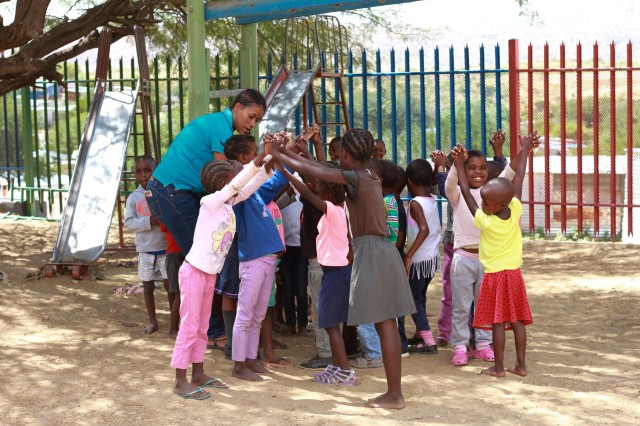Early Education in Namibia
Namibia is one of the least densely populated countries on the African continent. Covering a vast area of 825,418 km2 with barely 2.75 million inhabitants, the Republic of Namibia is a virtual desert located on the African continent's southwestern tip. The economy remains highly dependent on trade with South Africa, from which the country clinched its independence in 1990. Over the past 12 years, real GDP growth has been 4.6 % per year, and the average GDP per capita in 2020 was estimated at USD 5,923. Namibia is an upper-middle-income country characterised by important socio-economic disparities. The prevalence of HIV & AIDS among the adult population aged 15 to 49 years is very high (13.4 %). The country ranked 130th out of 187 countries according to the Human Development Index (HDI) in 2019.
Despite improvements in recent years, one in every 20 children in Namibia die before their fifth birthday – the under-5 mortality rate is 54 deaths per 1'000 children born, and the infant mortality rate (death within the first year) is 39 per 1'000 live births (Ministry of Health and Social Services & ICF International 2013: 88). Those surviving are often affected by poor health and poor nutrition. Almost one-quarter (24%) of children under 5 are stunted, i.e. short for their age, and 8% are severely stunted, as a result of chronic under-nutrition or poor health, according to data from the 2013 Demographic and Health Survey (Ministry of Health and Social Services & ICF International 2014: 131). Stunting also has permanent consequences for children's cognitive development. It is against this background that the failure to provide good ECD services can have devastating consequences for the education of many of Namibia's children, as the Fourth National Development Plan (NDP4) acknowledges: "The challenges relating to the quality of education start with the limited access to early childhood development (ECD) services. ECD refers to the growth and change that take place from preconception until the age of six. In these early years, the most critical neurological development takes place, with the most significant brain growth occurring in the first three years of life." (NDP4, 2012: 46-7)
In Namibia, 87% (or 256,000) of children aged 0-4 do not attend integrated ECD programmes and 60% (or 74,000) of children of pre-primary school age are not in preschool education in Namibia. In 2019, 3,000 ECD centres were recorded. With regard to the quality of teaching, 37% of the ECD centres did not employ any trained caregivers. Moreover, of all the ECD centres in Namibia, 71% were community-owned, and another 20% privately owned. UNICEF Namibia research further shows that regions with the lowest coverage of Early Childhood Development (ECD) services receive the poorest scores in standardised achievement tests have the most over-aged learners in the school system, the highest dropout rates as well as the highest poverty rates.
Sources: UNESCO EFA Country Profile, 2014; McCusker, Andrew: Financing Early Childhood Education in Namibia: How Microfinance & Education Quality Can Help, Wikipedia: Namibia 2021


